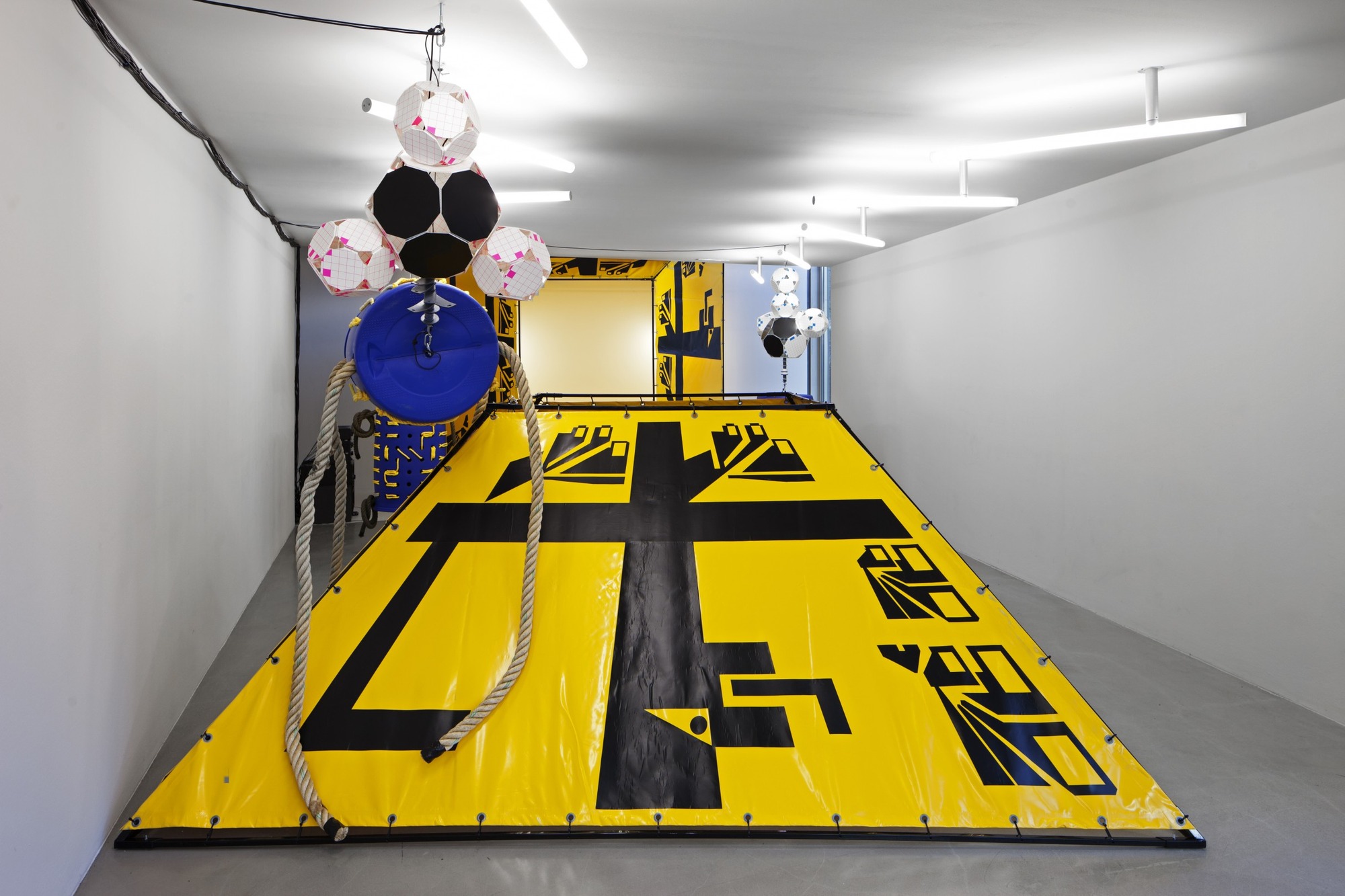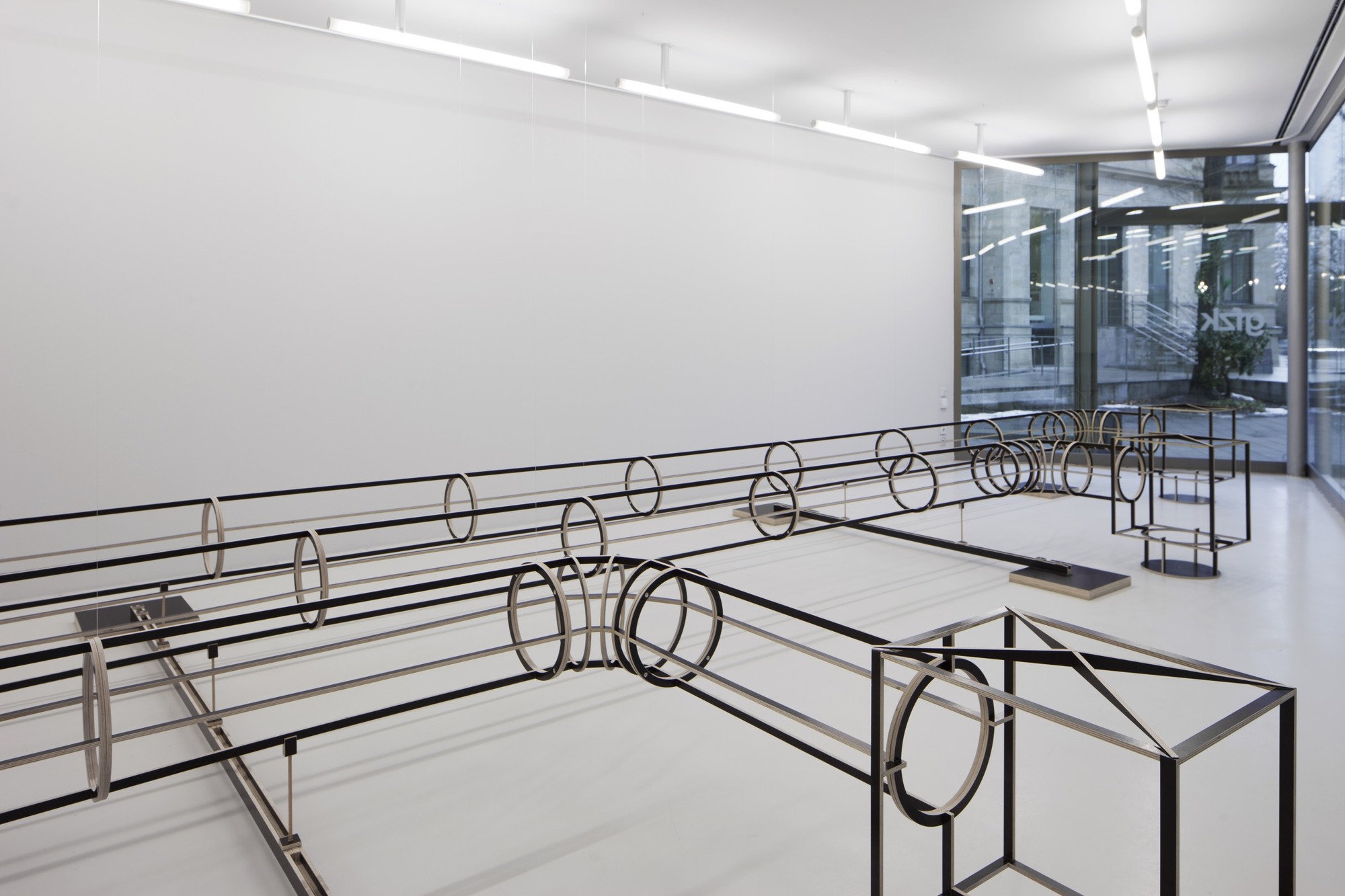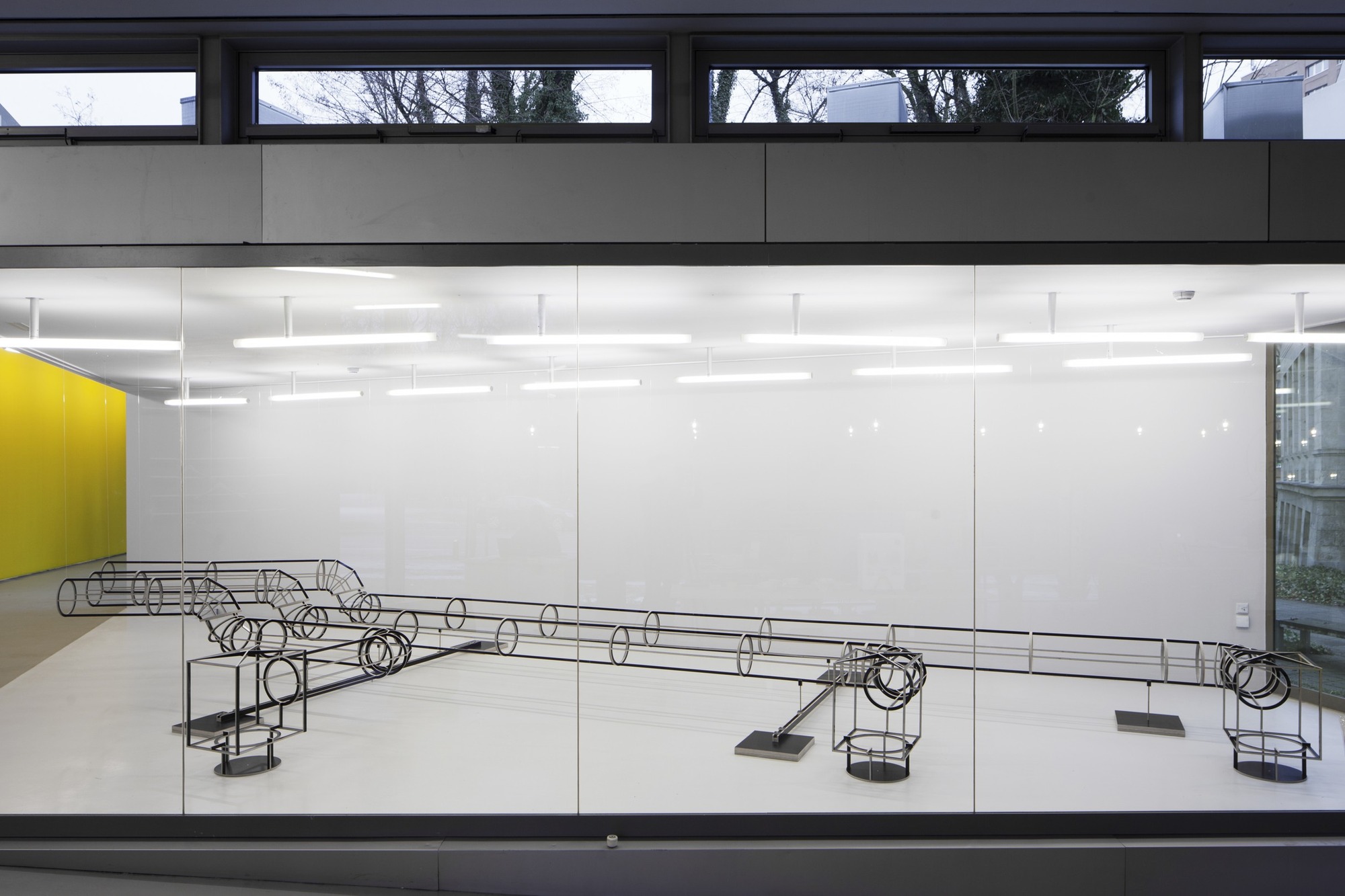Spaces of Art
28 Jan - 14 May 2017
Martin Beck, Lars Bergmann and Suse Weber
Curated by Julia Schäfer
The starting point of the project Räume der Kunst is the GfZK’s socially critical concept of art and its continued efforts to establish links between aesthetic experience and the everyday world. Ever since it was founded, the GfZK has always placed importance upon the spaces in which art is produced and presented, continually expanding them. The café, the library, the shop and two hotel rooms are designed by artists, and art is shown in the Garden Room and in the grounds.
Whilst the opening up/expansion has created new areas of activity and encouraged new forms of expression, one cannot overlook the fact that there is an ambivalent outcome for art when the unity between space, work and subject is broken up. Several examples can be found in history: whenever the borderlines between the arts disappear and the public is actively involved – e.g. in the experimental presentations of the Avant-garde or innovative museum concepts of the Modern Era – the conflict-ridden relationships between politics and aesthetics, art and economy, education and discipline clearly surface.
In the first part of Räume der Kunst, Lars Bergmann, Martin Beck and Suse Weber exhibit their works in the New Building. In their approaches to the space and the institution, they engage in three very different practices. Although their positions stand side by side as separate entities, they also communicate with one another. Lars Bergmann uncovers structures of the New Building and allows the rooms to perform in their own right. Suse Weber goes beyond the format of the exhibition and stages a hybrid of installation and opera. Martin Beck transfers structures from the past to a present that must be newly encoded and negotiated. Each of the works demands a new orientation, either in a physical or in a purely intellectual sense.
NEUBAU
Lars Bergmann (born in Jena in 1978, lives and works in Leipzig) analyses rooms and their underlying structures/architecture. He pays special attention to corners, walls, pipelines, surfaces. He copies rooms, scans walls and installs printed copies of them in their primary sites in such a way that the originals disappear from view. Bergmann builds negatives of rooms. He takes exact measurements and implants functional elements of the town(space) into exhibition rooms, generally using very simple/light materials. This leads to irritations and shifts that open up questions to the visitors and subsequently present them with tasks.
Emblematic sculptures
The works of Suse Weber (born in Leipzig in 1970, lives and works in Berlin) also follow the framework of a defined and coded vocabulary. Weber’s installations consist of sculpture, installation, production, performance, stage. As she herself says, it is the models of the viewers themselves that challenge the relationships between space, work and viewer. Weber examines social models and visualises them by offering representatives that have a physical/sensual effect on the viewer. On each occasion, her ensembles of the situation form in a new way – and take on local references.
...what follows may have produced what went before
The artistic works of Martin Beck (born in 1963 in Bludenz, lives and works in New York and Vienna) often make references to discourse from design, architecture and popular culture; forms of exhibition and display are a leitmotiv of his practice. His installations, photographs, films and other manifestations of his work incorporate elements from the past and the present, in constant motion. He often starts off from historical references which – researched in detail and subjected to processes of abstraction – are deposited in his contemporary works. The way in which he sets various temporal and formal orders in relation to one another opens up new approaches towards the present and history – quite in keeping with Martin Beck’s title for the Leipzig selection: ...what follows may have produced what went before.
Mediation
In collaboration with the Museum of Contemporary Art, Master’s students from the Art History Department of the University of Leipzig analysed the shift in exhibition practices in the 20th century. As part of a study module oriented towards research practice during the winter semester of 2016/17, they studied several pioneering German and international exhibitions from the 20th and 21st centuries. The results are summarised in a brochure.
Curated by Julia Schäfer
The starting point of the project Räume der Kunst is the GfZK’s socially critical concept of art and its continued efforts to establish links between aesthetic experience and the everyday world. Ever since it was founded, the GfZK has always placed importance upon the spaces in which art is produced and presented, continually expanding them. The café, the library, the shop and two hotel rooms are designed by artists, and art is shown in the Garden Room and in the grounds.
Whilst the opening up/expansion has created new areas of activity and encouraged new forms of expression, one cannot overlook the fact that there is an ambivalent outcome for art when the unity between space, work and subject is broken up. Several examples can be found in history: whenever the borderlines between the arts disappear and the public is actively involved – e.g. in the experimental presentations of the Avant-garde or innovative museum concepts of the Modern Era – the conflict-ridden relationships between politics and aesthetics, art and economy, education and discipline clearly surface.
In the first part of Räume der Kunst, Lars Bergmann, Martin Beck and Suse Weber exhibit their works in the New Building. In their approaches to the space and the institution, they engage in three very different practices. Although their positions stand side by side as separate entities, they also communicate with one another. Lars Bergmann uncovers structures of the New Building and allows the rooms to perform in their own right. Suse Weber goes beyond the format of the exhibition and stages a hybrid of installation and opera. Martin Beck transfers structures from the past to a present that must be newly encoded and negotiated. Each of the works demands a new orientation, either in a physical or in a purely intellectual sense.
NEUBAU
Lars Bergmann (born in Jena in 1978, lives and works in Leipzig) analyses rooms and their underlying structures/architecture. He pays special attention to corners, walls, pipelines, surfaces. He copies rooms, scans walls and installs printed copies of them in their primary sites in such a way that the originals disappear from view. Bergmann builds negatives of rooms. He takes exact measurements and implants functional elements of the town(space) into exhibition rooms, generally using very simple/light materials. This leads to irritations and shifts that open up questions to the visitors and subsequently present them with tasks.
Emblematic sculptures
The works of Suse Weber (born in Leipzig in 1970, lives and works in Berlin) also follow the framework of a defined and coded vocabulary. Weber’s installations consist of sculpture, installation, production, performance, stage. As she herself says, it is the models of the viewers themselves that challenge the relationships between space, work and viewer. Weber examines social models and visualises them by offering representatives that have a physical/sensual effect on the viewer. On each occasion, her ensembles of the situation form in a new way – and take on local references.
...what follows may have produced what went before
The artistic works of Martin Beck (born in 1963 in Bludenz, lives and works in New York and Vienna) often make references to discourse from design, architecture and popular culture; forms of exhibition and display are a leitmotiv of his practice. His installations, photographs, films and other manifestations of his work incorporate elements from the past and the present, in constant motion. He often starts off from historical references which – researched in detail and subjected to processes of abstraction – are deposited in his contemporary works. The way in which he sets various temporal and formal orders in relation to one another opens up new approaches towards the present and history – quite in keeping with Martin Beck’s title for the Leipzig selection: ...what follows may have produced what went before.
Mediation
In collaboration with the Museum of Contemporary Art, Master’s students from the Art History Department of the University of Leipzig analysed the shift in exhibition practices in the 20th century. As part of a study module oriented towards research practice during the winter semester of 2016/17, they studied several pioneering German and international exhibitions from the 20th and 21st centuries. The results are summarised in a brochure.






